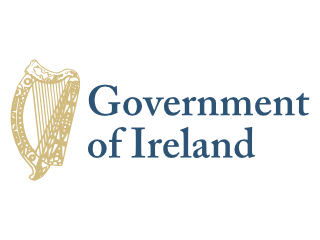Celtic tribes arrived on the island between 600 and 150 B.C. Invasions by Norsemen that began in the late 8th century were finally ended when King Brian BORU defeated the Danes in 1014. Norman invasions began in the 12th century and set off more than seven centuries of Anglo-Irish struggle marked by fierce rebellions and harsh repressions. The Irish famine of the mid-19th century saw the population of the island drop by one third through starvation and emigration. For more than a century after that the population of the island continued to fall only to begin growing again in the 1960s. Over the last 50 years, Ireland's high birthrate has made it demographically one of the youngest populations in the EU. The modern Irish state traces its origins to the failed 1916 Easter Monday Uprising that touched off several years of guerrilla warfare resulting in independence from the UK in 1921 for 26 southern counties; six northern (Ulster) counties remained part of the UK. Unresolved issues in Northern Ireland erupted into years of violence known as the "Troubles" that began in the 1960s. The Government of Ireland was part of a process along with the UK and US Governments that helped broker what is known as The Good Friday Agreement in Northern Ireland in 1998. This initiated a new phase of cooperation between the Irish and British Governments. Ireland was neutral in World War II and continues its policy of military neutrality. Ireland joined the European Community in 1973 and the euro-zone currency union in 1999. The economic boom years of the Celtic Tiger (1995-2007) saw rapid economic growth, which came to an abrupt end in 2008 with the meltdown of the Irish banking system. Today the economy is recovering, fueled by large and growing foreign direct investment, especially from US multi-nationals.
Ireland is a parliamentary republic.
Source: CIA World Factbook
Members:
Resources
Displaying 106 - 110 of 137Planning and Development Regulations, 2003 (S.I. No. 90 of 2003).
These Regulations amend the Planning and Development Regulations 2001: in Part 5 in relation with statutory declaration under section 97(5) of Act and minimum size of accommodation required by eligible persons for the purposes of section 100(1)(a) of the Act; and to provide the format of a receipt for the payment under section 96B of the Planning and Development Act, 2000.
Amends: Planning and Development Regulations, 2001 (S.I. No. 600 of 2001). (2001-12-19)
Planning and Development Regulations, 2005 (S.I. No. 364 of 2005).
These Regulations amend the Planning and Development Regulations 2001 in provisions relation to, among other things, environmental impact assessment for peat extraction so as to facilitate consideration of the need for the assessment of projects which are likely to have significant effects on the environment according to the criteria set out in Schedule 7 of the Regulations.
Planning and Development Regulations, 2007 (S.I. No. 83 of 2007).
These Regulations amend the Planning and Development Regulations 2001 by modifying Class 2, Part 1 of Schedule 2 of the Planning and Development Regulations 2001 to provide for exemptions in respect of micro-renewable technologies.
Amends: Planning and Development Regulations, 2001 (S.I. No. 600 of 2001). (2001-12-19)
Planning and Development Regulations, 2002 (S.I. No. 70 of 2002).
These Regulations amend the Planning and Development Regulations 2001 by modifying the scales of location maps to be used in areas other than built-up areas. The details to be indicated on location maps to be submitted with a planning application are also modified.
Amends: Planning and Development Regulations, 2001 (S.I. No. 600 of 2001). (2001-12-19)
Planning and Development Regulations, 2006 (S.I. No. 685 of 2006).
These Regulations amend the Planning and Development Regulations 2001 so as to implement provisions of the Planning and Development (Strategic Infrastructure) Act, which amends the Planning and Development Act 2000. Amendments concern, among other things, prescribes authorities for the purposes of various sections of the Act, the application for and granting of planning permissions, assessment of development likely to have a significant effect on the environment, (information on) transboundary environmental effects, major accidents and Strategic Infrastructure Development.


